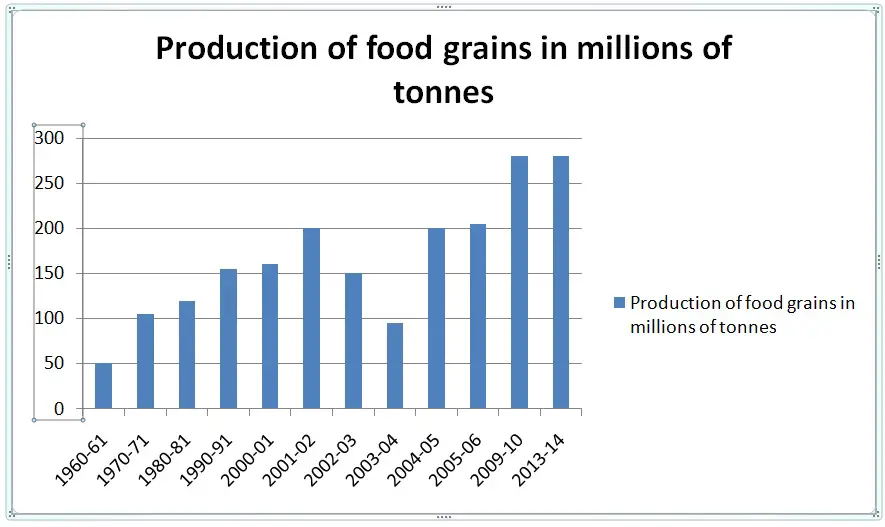Class IX Social Science Second Terminal Examination Model Question Paper
Class IX Social Science Second Terminal Examination Model Question Paper
Section A
1. The minimum guaranteed price at which the government offers to purchase any product is known as the ……………………………..
a) procurement price; b) minimum support price; c) issue price; d) market price
2. Who among the following is a part of the political executive?
a) District collector
b) Secretary of the Ministry of Home Affairs
c) Home Minister
d) Director General of Police
3. Who was the last emperor of Russia?
a) Stalin; b) Lenin; c) Nicholas II; d) Helmuth
4. State whether the following statement is true or false.
Dachigam Wildlife Sanctuary is located in Jammu and Kashmir.
5. Match the following.
a) Tropical Evergreen Arjuna
b) Tropical deciduous forest Scorpions
c) The thorn forests and shrubs Junipers
d) Montane forest Kashmir Stag
6. There are two statements marked as assertion and reason. Mark your answer as per the codes given below.
Assertion (A): The Election Commission of India is an independent and very powerful body.
Reason (R) When on election duty, government officers work not under the control of Election Commission but the government.
a) Both A and R are true. R is the correct explanation of A.
b) Both A and R are true. R is not the correct explanation of A.
c) A is true but R is false.
d) A is false but R is true.
7. Arrange the following in chronological order according to the year of formation.
a) REGP; b) SGSY; c) PMRY; d) MGNREGA
Options
a) a, b, c, d
b) b, c, d, a
c) b, a, d, c
d) c, a, b, d
8. Find the incorrect option
a) During heavy rainfall, lakes prevent flooding by containing excess flood water.
b) Lakes can be used to generate hydro-electric power
c) Lakes help in developing tourism
d) They don’t have a moderating influence on climate of the surrounding region.
9. Who advocated that India would be truly independent only when the poorest of its people become free of human suffering?
a) Mahatma Gandhi; b) Indira Gandhi; c) Jawaharlal Nehru; d) Subash Chandra Bose
10. Kalahandi is situated in which of the following states?
a) Odisha; b) Punjab; c) Tamil Nadu; d) West Bengal
11. Which of the following institutions can make changes to an existing law of the country?
a) The Supreme Court; b) The Prime Minister; c) The President; d) The Parliament
12. In Germany, at 14 years all boys had to join the Nazi Youth Organisation called ………………………….
13. Where does river Narmada originate?
14. In which year Wild Life Protection Act was implemented in India?
15. Study the graph and answer the following question. In which years did our country cross the 200 million tonne per year in food grain production?

16. The association of people who produced goods together and divided the profit according to the work done by members are commonly termed as …………………………..
17. …………………………. is the second biggest water fall of India made by Kaveri river.
18. Name the nomadic tribes found in Montane forest.
19. Give two examples for ox-bow lakes
20. German parliament is otherwise known as …………………………..
Section B
Very short answer questions
21. Write any two comparisons between Russian peasants and European peasants.
22. Why are most of the Peninsular rivers draining into Bay of Bengal?
23. Write any two needs for elections in democracy?
24. Mention the social and economic groups which are most vulnerable to poverty in India?
Section C
Short answer type questions
25. In India, female work force participation is seriously low. Explain the reasons.
26. Define the following.
a) Electronic voting machine
b) Voter list
c) EPIC
27. Which river marks the easternmost boundary of the Himalayas? Name the state through which this river enter India and the direction taken.
28. State three features of Nazi schooling.
29. Is it good to have political competition? Justify your answer.
Section D
30. Describe any five challenges to free and fair elections in India.
31. Explain what role women had in Nazi society.
32. Agriculture and Industries play an important role in the development of the country, and also it leads to river pollution. Explain the reasons and the ways to overcome river pollution.
33. Explain the various measures adopted by India to ensure food security.
Section E (Case based questions)
34. Karl Max and Friedrich Engels added other ideas to this body of arguments. Marx argued that industrial society was ‘capitalist’. Capitalists owned the capital invested in factories, and the profit of capitalists was produced by workers. The condition of workers could not improve as long as this profit was accumulated by private capitalists. Workers had to overthrow capitalism and the rule of private property. Marx believed that to free themselves from capitalist exploitation, workers had to construct a radically socialist society where all property was socially controlled. This would be communist society. He was convinced that workers would triumph in their conflict with capitalists. A community society was the natural society of the future.
(i) ………………………. sought to build a cooperative community called New Harmony in Indiana.
(ii) Socialists saw ………………………… as the root cause of social ills of the time.
(iii) Who argued that industrial society was capitalist?
(iv) Which international body was formed in Europe in the 19th century to coordinate the efforts of socialists all over Europe?